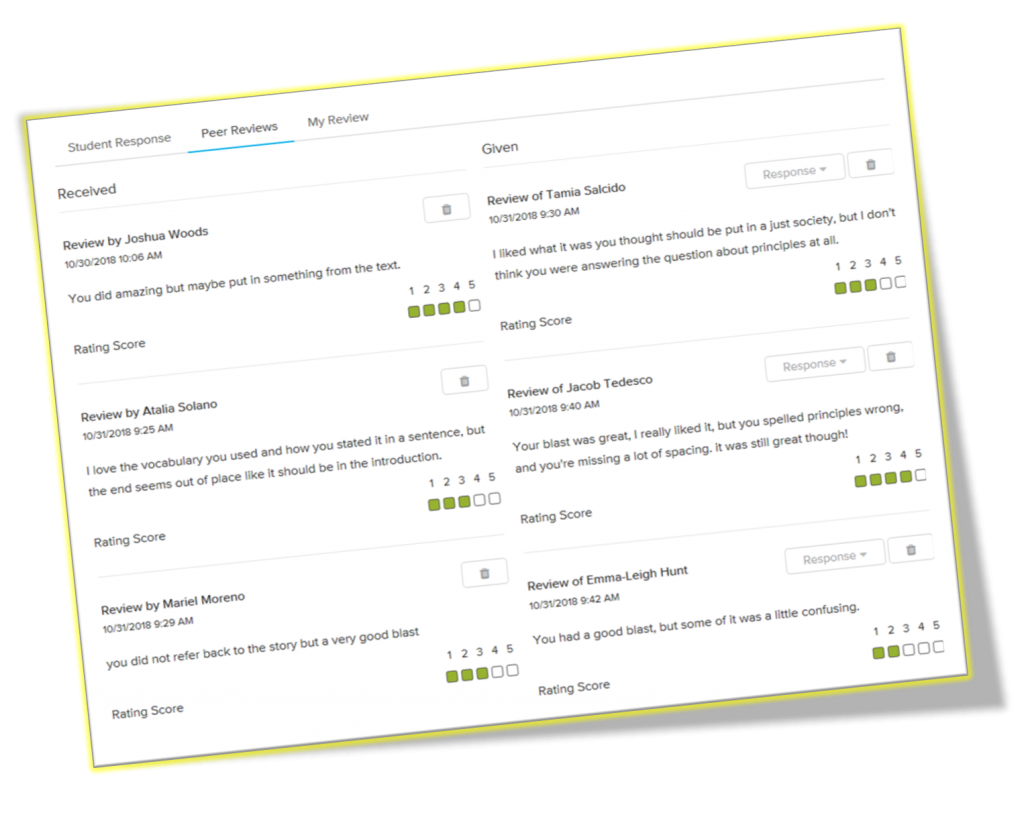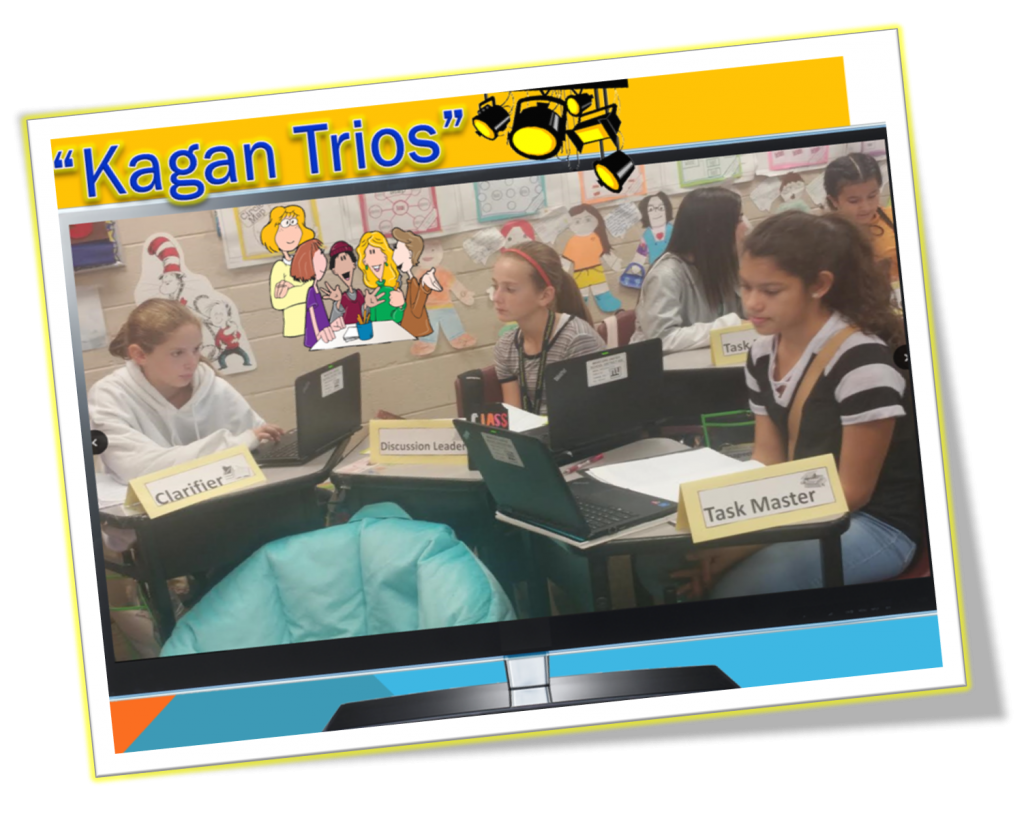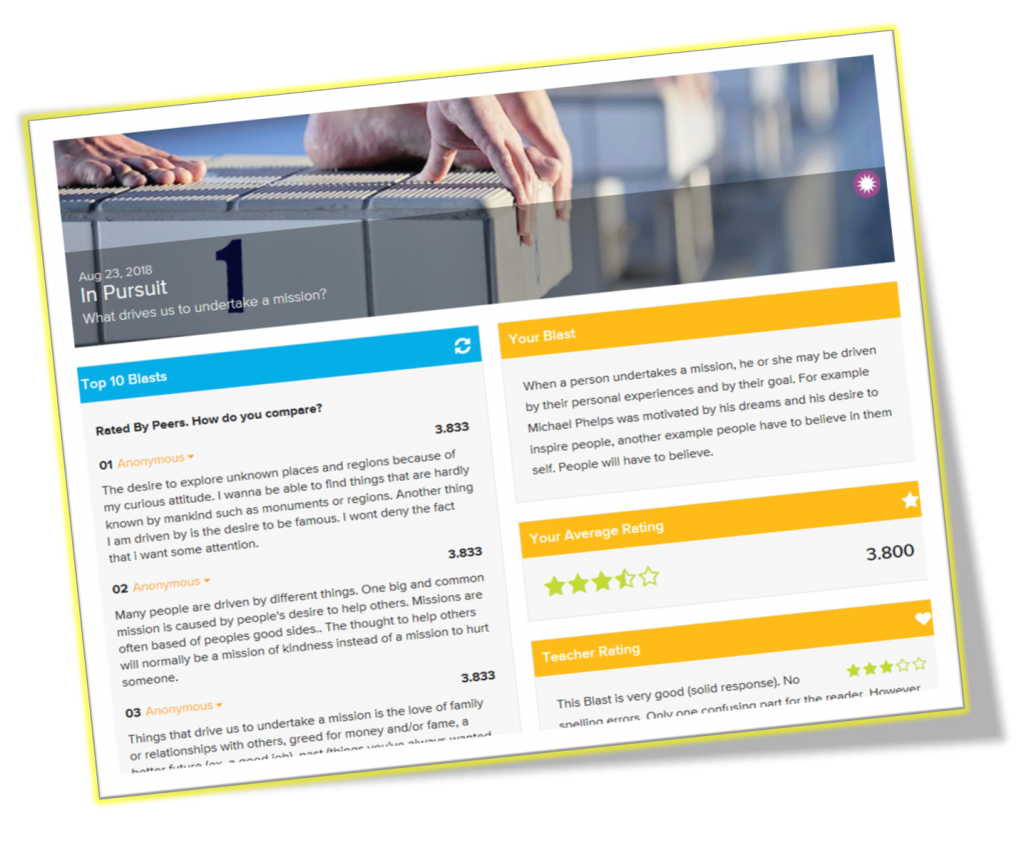We are living in a culture where everyday people become active participants in their environment (YouTube, reporting the news through their cell phones, co-teaching with the instructor in a gym class, Facebook, Twitter, Instagram etc.). Why should education be any different? Education culture can be just as powerful and interactive when our scholars are encouraged to help shape what and how learning takes place. It requires teachers to create partnerships with students. In education, we like to call this student-centered learning. Relinquishing any kind of control in the classroom can be a scary thing for some; this is understandable, but the payoff is well worth any anxiety a teacher might feel at first.
The tools for establishing a culture of student voice are limitless! I believe it has to start with simple classroom norms. Norms are something different from the regular classroom rules or expectations that are designed to establish order. Norms provide scholars and teachers with a shared understanding of how they can best support each other in the learning process. Norms are like behavior manuals that can assist the teacher and the other students in mentoring classmates who struggle with following the norms. This leads to student leaders in the classroom, which can become one of the most powerful voices for a young person.
In addition to norms, another way I like to create and nurture student voice is by providing opportunities for my scholars to reflect and give feedback about the curriculum, classroom culture, and classroom systems. I believe by spending time on student reflection and feedback, I am sending out positive vibes to my scholars that I value our academic setting, and I value their voices. Students definitely need “airtime” to voice their thoughts about classroom life; without this, it becomes quite a challenge to get our scholars to care and become passionate about their learning. Once they do engage; however, their ideas should be implemented. Otherwise, student voice becomes more of a façade, instead of something organic and genuine; authenticity is lost and students can see through the smokescreen.
We just adopted a new ELA curriculum in my district and I absolutely love it. It puts student voice on a whole new level; it’s a game changer! One example is something called the Blast. In Blast lessons, students read short passages of informational text, follow carefully selected research links to deepen content knowledge and respond to the driving question in one hundred and forty characters or less (very Twitter like).
The powerful part is upon completion of the Blast, scholars read peers’ responses and provide anonymous feedback!
You could actually do the Blast without the technology (simply using sticky notes).

Anonymous peer reviews: I can see how my scholars rated each other and what kind of feedback they gave to each other. So Powerful!
There is a great article in Arizona K-12 Homeroom entitled, “Speak Up! 5 Ways to Develop Students’ Public Speaking Skills.” The article highlights anxiety-free tips on how to raise students’ public voices. For example, the blogger writes, “Start small…take baby steps and start with small chunks leading up to bigger projects. For starters, you might begin with 30-second mini-speeches, nonverbal practice, and impromptu exercises with smaller groups.” I have found this strategy of starting small really works for my scholars. It builds up their self-confidence. I do something in my classroom called Kagan Trios. Kagan group structures are instructional strategies designed to promote cooperation and communication in the classroom; what I love most about these Kagan Trios is how it boosts my scholars’ confidence and retain their interest in classroom interaction. They are using their student voice (in a very small, safe setting) to interact with the curriculum, and with each other.
Everyone in the Kagan Trio has a role with a specific job (the clarifier, the discussion leader, the task master). The trio cannot accomplish the group task or goals without working together. Starting small, in order to encourage and develop student voice, is especially helpful for my shy students and early language learners. The result: greater engagement and lower anxiety. Among all the Trios, I will pick one to spotlight and we all get to watch that particular group present their work to the rest of the class. That’s always a fun treat for all of us and great motivation for the rest of the scholars to work that much harder so their group can be picked next time!
Students value a classroom or school culture where they feel their voice matters. Establishing a culture of student voice is giving young people charge over how they learn; this includes access to the curriculum, co-development of assessments and products for learning outcomes. Teachers who co-create a culture of student voice are setting the foundation for students owning their own learning. Partnering with my scholars truly gives me the greatest joy! There’s nothing else like it.
What are you doing to nurture and develop student voice in your classroom? Please share your thoughts and strategies!











Comments 4
I love this entry so much!
The thing I love about Kagan strategies is that we can take them and then manipulate them to become their own thing. I have many teachers who have been to Kagan workshops at my school and we have a teacher who facilitates for Kagan. I don’t know the “names” of them, but I definitely took an activity and molded it to work in my classroom. I regularly in high school English get students earnestly writing multiple sentence responses, standing up and reading their responses aloud like mini speeches. They often do it without even the notion of rewards such as grades or recognition. They simply get writing and presentation practice because that’s the culture I’ve been able to create.
Thank you for sharing your strategies. I’ll definitely be looking to add some of your ideas into my mix!
Thank you James and yes I agree. I love taking Kagan and just making it my own and using it for a variety of purposes (like the Trios). It’s great to see your high school kiddos embracing “Stand-up, Hands-up, Pair-up”. It’s one of my favorites too and that intrinsic motivation…. what more can we ask for as teachers. So awesome!!!
and that intrinsic motivation…. what more can we ask for as teachers. So awesome!!!
Hi Treva! My mentor and I were just having this conversation today. I love that you mention relinquishing control. This is not an easy task for many teachers. Over the last couple years, I have begun to my see my classroom as organized chaos because I strive to give my students tools and talk about why and how we use these tools based on our task, audience, and purpose. These tools are often in the form of choices in their writing. I show them a few different ways do complete a task. We talk about why they may use a specific strategy or choice and then I let them do their thing. It’s a great way to give them a “voice” as they are making their own choices. I want them to become confident choice makers. Great post!
Love it, especially when it comes to writing. That’s very powerful!!